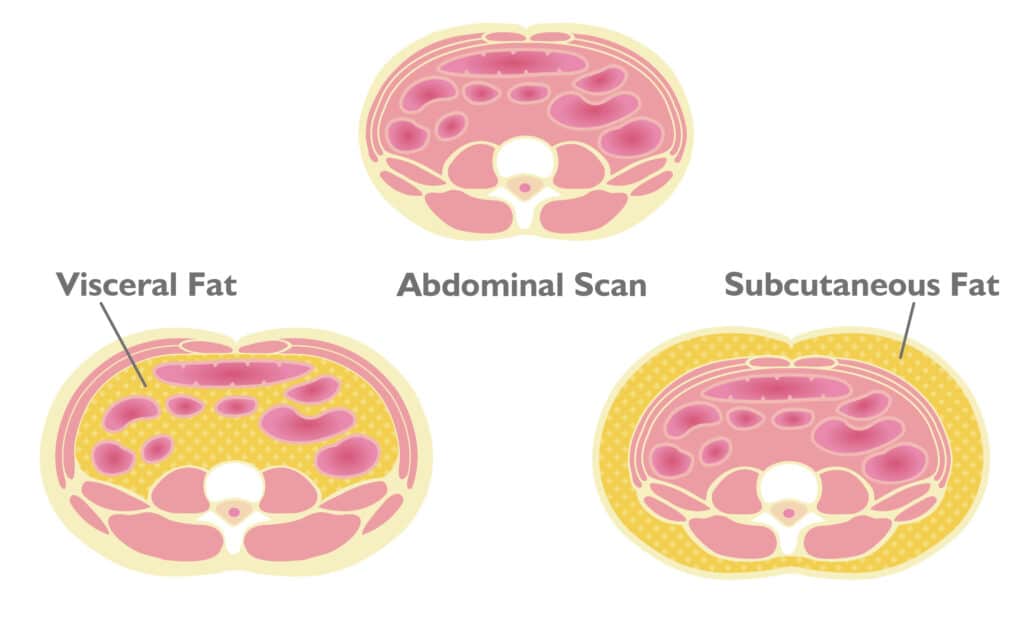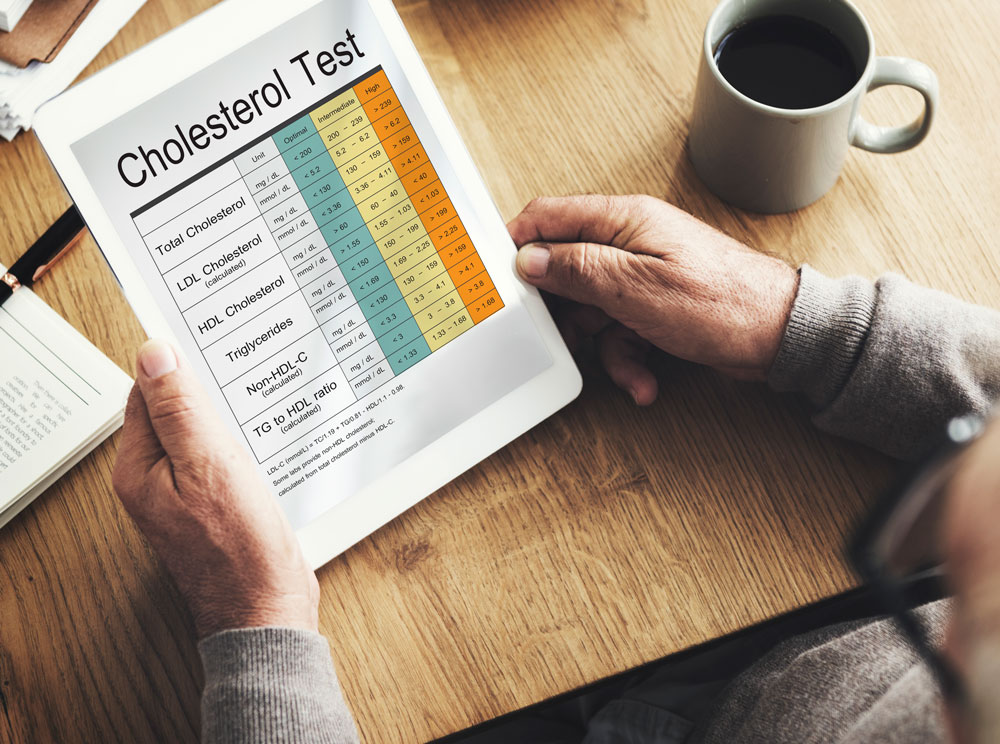
A Deep Dive into the Dangers Within
Hidden deep within our bodies lies a potentially dangerous form of fat called visceral fat. Unlike the visible subcutaneous fat that we all know, visceral fat surrounds our organs silently, potentially leading to serious health risks. In this comprehensive guide, you’ll learn about the different types of fat in the body, the role of hormones in fat distribution, the dangers of visceral fat, and how to accurately measure it.
You might think that a bit of fat around your organs sounds a lot less dangerous than the rolls of fat that are visible when you’re obese, but research shows that visceral fat is riskier than subcutaneous fat when it comes to developing conditions such as Type 2 diabetes, heart disease, Alzheimer’s disease, and stroke. It’s thought that the reason visceral fat is more dangerous is that it contains proteins that promote inflammation and make your blood vessels narrower. This leads to high blood pressure, which is a primary cause of numerous serious health problems.
While consuming high levels of dietary fat undoubtedly plays a major role in increasing the quantity of visceral fat in your body, there are several other ways in which visceral fat forms. Hormone activity is one, with others including shiftwork, smoking, and poor quality sleep.
What is visceral fat?
Visceral fat covers the organs (viscera) inside your abdomen, and unlike subcutaneous fat, which is under your skin, visceral fat is effectively invisible. You can tell when you get on the scales or start going up a clothes size that you’re gathering subcutaneous fat, but visceral fat doesn’t necessarily give you a large belly; in fact, your tummy could be flat but still be full of visceral fat. This phenomenon is referred to as TOFI – Thin Outside Fat Inside.
Visceral fat poses significant health risks by surrounding vital organs and contributing to major diseases. Don’t wait to address this silent threat. Book an assessment with us, and through functional medicine, we’ll tailor strategies to reduce visceral fat and boost your overall health. Act now for a healthier tomorrow.
How does visceral fat differ from other kinds of fat?
Your body contains white, beige, and brown fat cells that it stores as subcutaneous, visceral, or essential fat.
White fat cells store energy and play a major role in the production and function of hormones such as estrogen, insulin, cortisol, growth hormones, and leptin (which stimulates hunger). You need small quantities of white fat to ensure these hormones can do their jobs, but too much is a leading cause of health problems.
Most of your fat is likely to be subcutaneous and contain mainly white fat cells plus some brown and beige ones. Fat cell function changes dramatically as it moves from white to brown; whitening increases inflammation and the risk of metabolic disorders, while browning reduces it. Conversely, browning increases thermogenesis and insulin sensitivity, and whitening lowers it. Interestingly, visceral fat is formed entirely of white fat cells.

How do I know if I’ve got too much visceral fat?
The simple answer is that you won’t, unless you have a CT (computed tomography) or MRI (magnetic resonance imaging) scan. However, there are ways to estimate your visceral fat levels:
Waist circumference (WC)
- WC just requires a tape measure. If your waist is over 102 cm (men) or 89 cm (women), you’re likely to have some excess visceral fat.
BMI
- BMI (body mass index) uses weight and height to work out how healthy your weight is. A BMI over 30, which is classed as overweight, could signify you have visceral fat.
HWR
- HWR (hip-to-waist ratio) is another calculation that compares waist and hip size. There’s compelling evidence to suggest it’s more accurate as a predictor of diabetes and heart disease risk than BMI, probably because it looks at where fat gathers on your body. A larger waist and belly are more of a risk than heavy hips and thighs, which lends weight to the idea that a high HWR is a good indicator for visceral fat.
When considering all these methods of estimating visceral fat, it’s vital to note that the figures stated are most accurate for Caucasians, and are lower for people of Asian descent. Asian people have a higher visceral fat mass than those from other ethnic groups, so if you’re Chinese and use HWR, BMI, or WC, to estimate your visceral fat levels, the results are likely to be inaccurate. The guidelines need adjusting to account for ethnicity, so it’s important to bear that in mind to ensure you aren’t getting a false sense of security.
Another way of assessing your body fat and lean muscle mass is bio-electrical impedance analysis or bioimpedance analysis (BIA). This is a non-invasive test that measures how well your tissues conduct electrical currents. As electricity conductivity varies between fat and muscle, it’s possible to calculate how much of your body consists of fat. BIA is often used in health and nutrition evaluations, and studies show it could be more accurate for assessing body fat than the less sophisticated WHR and BMI, particularly because it’s possible to use it for people of all ethnicities.
While fat plays a critical role in our bodies, the invisible visceral fat can have deadly implications if not properly managed. Current measurement methods provide good estimations, but there’s still a need for more universally applicable and precise techniques. If you have concerns about visceral fat and your health, reach out to our team at Peak Metabolism. Together, we can help you navigate through your fitness journey towards optimal health.






